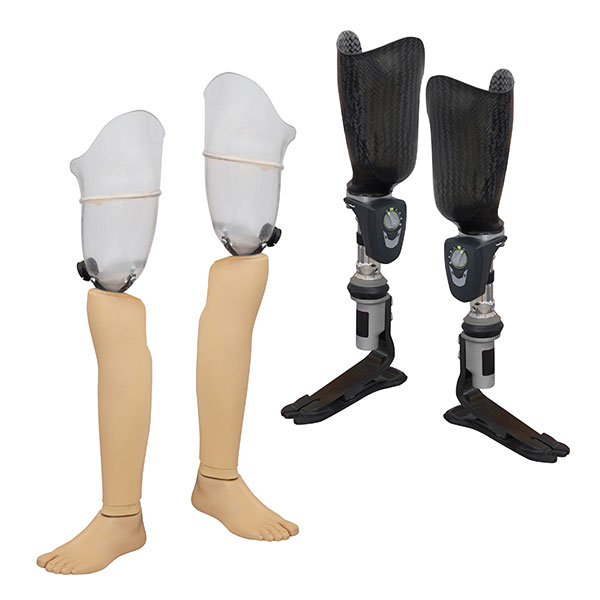
Medical Devices 2021: Market Opportunities for 3D printed Prosthetics, Orthotics, and Audiology devices
$2,497.50 – $3,497.50
| Select User License | Single User License (one computer), Group User License (Up To Five Computers), Enterprise User License (Unlimited Computers Within Your Organization) |
|---|
Request Excerpt
Chapter one: Current status of Additive Manufacturing technologies within the prosthetics, orthotics and audiology device market.
1.1 Additive manufacturing trends within the Prosthetic, Orthotic and Audiology market
1.1.1 Additive Technology OEMs, Materials Suppliers developing healthcare focused solutions
1.1.2 Continued penetration of 3D printing within healthcare applications
1.1.3 Acceleration of additive adoption in response to COVID-19 disruption
1.2 Defining the value proposition of 3D printing within the medical device industry
1.2.1 Process and operational improvement opportunities for 3D printing
1.2.2 Supply chain reconfiguration potential with 3D printing
1.2.3 Product performance and functionality improvement
1.2.4 Customer experience and channel opportunities
1.2.5 Comparison of value propositions between medical device segments
1.3 Non-additive technologies critical to adoption within the medical device industry
1.4 Market Observations, Outlook, and Growth Projections
Chapter two: 3D printing of limb prosthetics
2.1 Value propositions for 3D printing within the Prosthetic device industry
2.1.1 Transitioning from a traditional fabrication process chain to a digital approach
2.1.1.1 Digitisation and streamlining of the impression process
2.1.1.2 Fabrication techniques for sockets
2.1.2 Improved customer engagement through 3D printing
2.1.2.1 Streamlining of data capture and socket fitting
2.1.3 Economics of 3D printed vs traditional prosthetic fabrication
2.2 Additive Manufacturing Application space within commercial prosthetics
2.2.1 Upper extremity prosthetic devices – arms, hands and fingers
2.2.2 Lower extremity prosthetics – legs and feet
2.2.3 Facial, breast and reconstructive prosthetics
2.3 Additive manufacturing technologies, platforms and materials for the production of prosthetics
2.3.1 Material Extrusion technologies, materials and providers
2.3.2 Polymer Powder bed fusion technologies, materials and providers
2.3.3 Photopolymerization technologies, materials and providers
2.3.4 Metal powder bed fusion technologies, materials and providers
2.4 Prosthetic device market and adoption trends
2.4.1 Review of emerging 3D printing go-to-market and business models within the prosthetics industry
2.5 Outlook and penetration analysis for 3D printing in prosthetic devices
Chapter three: 3D printing of hearing aids and audiology devices
3.1 Current state of 3D printing technologies in hearing aid and audiology device market
3.1.1 Review of value propositions for 3D printing technology for hearing aid production
3.1.2 Current competitive makeup of hearing aid market and 3D printing deployments
3.1.3 Segmentation of hearing aid market by product type
3.2 3D printing technologies deployed within the hearing aid and audiology industry
3.2.1 Evolution of the additive hearing aid market
3.2.2 Commercialization of next-generation, continuous 3D printing technologies
3.2.3 Disruption from new entrants into the 3D printing hearing aid space
3.2.4 Technology development within the Metal additive technology market
3.3 Business considerations and learning points from the hearing aid industry for medical 3D printing disruption
3.3.1 A reversal of market trends that have sustained 3D printing growth
3.3.2 Advent of more compact, accessible and faster printing technologies
3.4 Outlook and penetration analysis for 3D printing in hearing aids and audiology
Chapter four 3D printing of orthotic brace devices and orthotic insoles
4.1 Review of Value Propositions for 3D Printing for Orthotic Devices and insoles
4.1.1 Digitisation and automation of the production process
4.1.2 Advancing the performance of lower limb orthosis
4.2 Segmenting 3DP lower-limb orthotic applications by commercial relevance
4.2.1 3D printing within the Medical Insoles segment
4.2.2 3D printing within the orthotic brace segment
4.3 Additive manufacturing technologies and materials for within the orthotic brace and insole market
4.3.1 Material Extrusion technologies, materials and providers
4.3.2 Polymer Powder Bed Fusion technologies, materials and providers
4.4 Outlook and penetration analysis for 3D printing in orthotic devices
Chapter five: Examining the future of 3D printed orthotics, prosthetics and hearing aids – ten year forecast
5.1 Future trends within the 3D printed orthotics, prosthetics and hearing aids market
5.2 3D printing hardware opportunities in Limb Prosthetics, Lower limb orthotics and hearing aids
5.2.1 Hardware forecasts by market subsegment and technology type
5.3 3D print material opportunities resulting from orthotic, prosthetic and audiology applications
5.3.1 Material forecast by material type
5.4 3D printing services and software opportunities in prosthetics, orthotics and hearing aids
About SmarTech Analysis
About the Analyst
Acronyms and Abbreviations Used In this Report
3D printing is beginning to show true signs of disruption within the healthcare industry in varying degrees across different fields, and allowing for greater levels of digitization, customisation and automation, all leading to improved patient outcomes, as well as new innovation and cost reduction for device OEMs and healthcare providers.
Whereas the use of 3D printing has become well established in the production of advanced orthopaedic implants, the production of dental aligner tools and models, and increasingly in pre-surgical planning and more so within surgical training, there remains scope for major innovation within the medical field through the adoption of 3D printing.
A burgeoning area of opportunity lies within the prosthetic device segment, with 3D printing set to trigger major disruption, innovation and growth across a number of discreet device segments. This report examines the opportunities for 3D printing across three distinct areas within prosthetics; hearing aids, upper and lower limb prosthetics and orthotic braces and insoles.
Within the audiology industry, 3D printing has established itself as a core production technology for custom in-ear hearing aid devices, with the near entirety of such hearing aid shells being directly manufacturing using 3D printing. With the demand for such devices however trending downwards, the potential for new innovations in metal devices and behind-the-ear devices has increased, setting the stage for a new wave of innovation within this well-established 3D printing market.
Conversely, the use of 3D printing within the orthotics and prosthetics industries is on the cusp of moving out of the R&D lab and into full scale commercialisation, with multiple prosthetic device and orthotic insole start-ups beginning to scale-up in partnership within industry incumbents to deliver innovative, customised and superior functioning corrective devices.
This report explores the value propositions for 3D printing across the selected device segments, assessing the benefit, insertion points and stakeholder impact of technology adoption. Additionally, a review of the current state-of-the-art of 3D printing technologies in these areas showcases which technology solutions are positioned for future penetration. Finally, a ten year forecast for each device segment alongside technology adoption, material revenue and part printing forecasts provide a clear future outlook.

